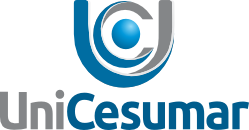Predominance of fungus in water for human consumption in elderly people homes and kindergartens in Maringá Pr, Brazil
Keywords:
Water, Predominance, Identification, Fungi, Institutions.
Abstract
The worldwide use of water, an essential element for human survival, is estimated to be approximately four thousand cubic kilometers per year. Albeit highly important, water may harbor many pathogens such as bacteria, viruses, protozoa, helminths and fungi. Fungi are ubiquitous microorganisms and survive in extreme pH and temperature ranges, besides putting in danger whole populations, especially those with low immunodeficiency. The predominance of fungi in drinking water in elderly people homes and children’s day-care centers was determined by membrane filtration technique and API 20C AUX commercial kit. Forty-three water samples, 28 from children’s day-care centers and 15 from elderly people homes, were analyzed. Fungi were reported in 40 (93.0%) samples. Positive samples comprised filamentous fungi in 12 (30.0%) samples, yeasts in 17 (42.5%) samples and both types of fungi in 11 (27.5%) samples. The most prevalent genus of isolated yeasts was Rhodotorula sp. (67.8%), followed by Cryptococcus sp. (42.8%), Candida sp. (39.3%) and Geotrichum sp. (3.6%). Results show that water may be a fungus source with potential risks to the health of the population, particularly immunodeficient people.
Published
2010-07-15
Section
Environment
A Revista se reserva o direito de efetuar, nos originais, alterações de ordem normativa, ortográfica e gramatical, com o intuito de manter o padrão culto da língua, respeitando, porém, o estilo dos autores. As opiniões emitidas pelos autores são de sua exclusiva responsabilidade.
Os direitos autorais pertencem exclusivamente aos autores. Os direitos de licenciamento utilizado pelo periódico é a licença Creative Commons Attribution Creative Commons Atribuição 4.0 Internacional. São permitidos o compartilhamento (cópia e distribuição do material em qualquer meio ou formato) e adaptação (remixar, transformar, e criar a partir do trabalho, mesmo para fins comerciais), desde que lhe atribuam o devido crédito pela criação original.
Creative Commons Atribuição 4.0 Internacional. São permitidos o compartilhamento (cópia e distribuição do material em qualquer meio ou formato) e adaptação (remixar, transformar, e criar a partir do trabalho, mesmo para fins comerciais), desde que lhe atribuam o devido crédito pela criação original.
Os direitos autorais pertencem exclusivamente aos autores. Os direitos de licenciamento utilizado pelo periódico é a licença Creative Commons Attribution
 Creative Commons Atribuição 4.0 Internacional. São permitidos o compartilhamento (cópia e distribuição do material em qualquer meio ou formato) e adaptação (remixar, transformar, e criar a partir do trabalho, mesmo para fins comerciais), desde que lhe atribuam o devido crédito pela criação original.
Creative Commons Atribuição 4.0 Internacional. São permitidos o compartilhamento (cópia e distribuição do material em qualquer meio ou formato) e adaptação (remixar, transformar, e criar a partir do trabalho, mesmo para fins comerciais), desde que lhe atribuam o devido crédito pela criação original.

